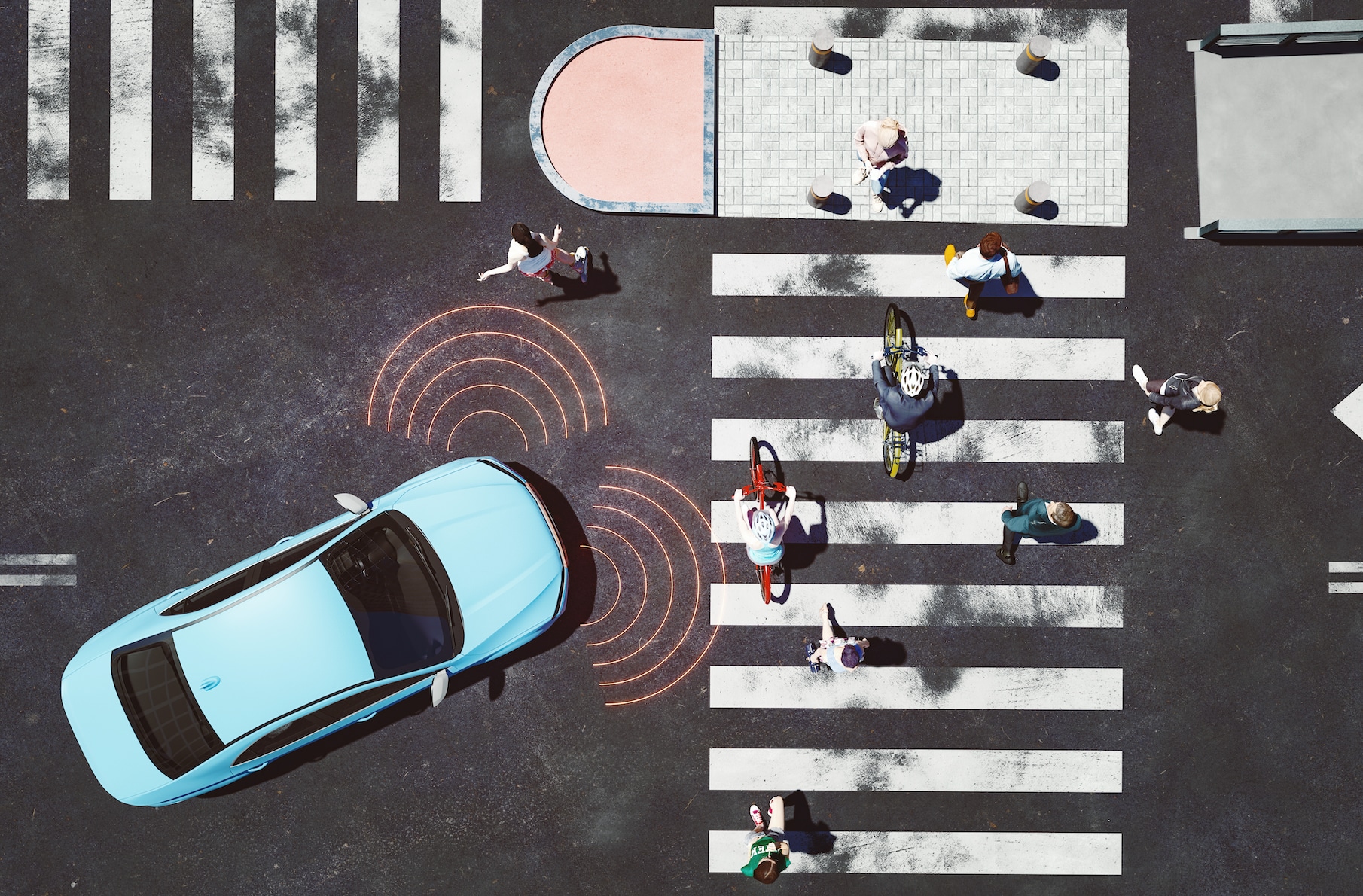The fact is that safety devices in automobiles are having a dynamic impact on lowering accident rates in this country. This is especially impactful when you realize that we drive many more miles today compared to back in the 1960s. When looking at the same data from 1960 to 2019 in terms of miles driven, Americans have increased the miles they drive by an astounding 371 percent while the rate of fatalities has dropped by 78 percent. What safety devices make today's cars safer? Let's take a look.
How Car Safety Has Improved

Today's Cars are Safer!
According to data by the U.S. Bureau of Transportation, the number of fatalities that occur due to motor vehicle accidents has dropped significantly in the last 60 years due in part to the use of modern safety devices in cars. The data tells us that the number of fatalities in the United States for every 100 million miles driven, has fallen from a high of 5.2 in 1960 to a low of 1.1 in 2019. That's a 78 percent drop. In 2019 alone, there were 6.7 million car accidents in America that resulted in 36,096 deaths. Also factor in that there are many more vehicles on the road today than there were in 1960.
Seatbelts
The introduction of seatbelts in automobiles has had an enormous impact on passenger safety. The original 2-point lap belt has evolved into the current 3-point shoulder belt design that was developed in 1959 by Volvo engineer Nils Bohlin.
Since 1966, American vehicles have been required to have seat belts and the 3-point shoulder belts have been mandated since 1973. Now all states have "click it or ticket" laws. According to the National Highway Traffic Safety Administration (NHTSA), the use of seat belts has reduced the risk of front seat occupant deaths by 45 percent.
Airbags
Modern airbags were introduced in passenger cars in the 1970s. These have evolved to include six or more airbags throughout the cabin of today's vehicles. Airbags reduce the risk of occupants' heads and torsos being severely injured in a crash.
The NHTSA estimates that the combination of using a 3-point seat belt along with air bags reduces the risk of severe injury or death in a frontal crash by as much as 61 percent.
Backup Cameras
The use of backup video cameras in cars became mandatory in 2018 and they are now standard equipment in all new cars. They were created to reduce the risk of colliding with objects, other cars, and pedestrians when backing up.
While it is still important to turn and look behind you before backing up, these cameras have improved visual range in some vehicles by as much as 75 percent.
Driver Assist Features
As we write this, a new wave of Advanced Driver Assistance Systems (ADAS) have become commonplace in most new cars that are saving more lives and making driving safer in the long run. These features include adaptive cruise control, automatic emergency braking, blind spot detection, collision warning, cross-traffic alert, lane departure warning, and more.
Basically, all these technologies utilize cameras and sensors to detect potential collisions and alert the driver. According to the Insurance Institute for Highway Safety (IIHS), blind-spot monitoring alone has lowered crash involvement by 14 percent when compared with vehicles without this feature. Driver assist features such as front collision warning uses cameras, radar and lidar (light detection and ranging) to detect when a vehicle is getting too close to the front of your car and uses automated braking to avoid a collision. An IIHS study found that these systems reduce front end collisions by 27 percent.
In another study, Subaru's Eyesight system with pedestrian detection was shown to reduce pedestrian-related injuries by 35 percent compared with vehicles without the system.
The Road Ahead
Advanced Driver Assistance Systems continue to evolve toward a day when our vehicles will be capable of autonomous driving. The NHTSA defines different levels of automation, and these range from none, known as Level Zero, to fully automated driving at Level 5.
Levels of driving automation
According to the NHTSA, the levels of car automation are:
- Level 0 - The human driver does everything.
- Level 1 - An automated system can assist the human driver in conducting one part of the driving task for extended periods.
- Level 2 - An automated system can assist the driver with multiple parts of the driving task for extended periods. The driver must continue to monitor the driving environment and be actively engaged.
- Level 3 - An automated system conducts all of the driving tasks without driver engagement and monitors the driving environment, but the human driver must stand by to intervene in response to a system failure or request from the system to take over.
- Level 4 - An automated system can conduct the entire driving task without driver input but only in certain conditions (e.g., limited to 25 mph) or places (e.g., a city center).
- Level 5 - An automated system can perform the entire driving task without driver input under all conditions.

Note that in cars in which only some elements of driving, such as steering or controlling speed or following distance, are assisted by the automation (Levels 1-2), drivers are still expected to be actively engaged and to continuously monitor the automation and driving environment. Adaptive cruise control and lane centering are examples of Level 1 systems.
As of this writing, the technology available in our vehicles continues to evolve and improve, lowering the rate of crashes and the number of occupants who are injured in an accident. We've come a long way in 60 years.


